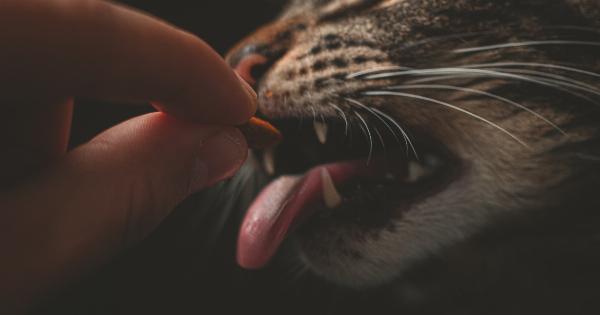Cats are often seen as low-maintenance pets that require very little attention. However, when it comes to their nutritional needs, they require careful consideration to ensure they live a healthy and long life.
In this article, we will discuss the importance of understanding your cat’s nutritional needs and how to meet them.
Why is Nutrition Important for Cats?
Proper nutrition is a critical component of a cat’s overall health and well-being. Feeding your cat a balanced and complete diet can help reduce the risk of various health problems, including obesity, heart disease, diabetes, and kidney disease.
Besides, a healthy diet can help support a cat’s immune system, improve their coat and skin health, and promote overall vitality.
What are the Nutritional Requirements for Cats?
Cats are obligate carnivores, which means their bodies require certain nutrients that can only be found in animal-based proteins. Some of these nutrients include taurine, arachidonic acid, and vitamin A.
Unlike humans and dogs, cats cannot produce these essential nutrients on their own, making them crucial components of a cat’s diet.
In addition to animal proteins, cats also require other nutrients such as carbohydrates, fats, minerals, and vitamins.
Carbohydrates provide cats with energy, whereas fats help to promote healthy skin and coat and provide them with essential fatty acids. Minerals such as calcium and phosphorus are required for healthy bones, while vitamins such as A, B, D, and E help support various organ functions.
How to Choose the Right Cat Food?
Choosing the right cat food can be a daunting task, considering the various brands and options available in the market. However, there are some factors to consider when choosing cat food:.
1. Ingredients
When choosing cat food, it’s important to look at the ingredients list. The first few items should ideally be a source of animal protein, such as chicken, beef, or fish.
Ensure that the ingredients are of high quality and not just filler ingredients such as corn or wheat.
2. Nutritional Adequacy Statement
Ensure that the cat food you choose has a nutritional adequacy statement issued by a respected organization such as the Association of American Feed Control Officials (AAFCO).
This statement ensures that the food meets the minimum nutritional standards for cats.
3. Age and Health of Your Cat
Cats have different nutritional needs depending on their age and health status. Kittens require more protein and calories than adult cats, while senior cats might require a different balance of nutrients to support their aging bodies.
Consult with your veterinarian to determine the right food for your cat’s specific needs.
Types of Cat Food
There are various types of cat food available in the market, and the type you choose depends on various factors such as your cat’s age, health, and personal preference. Here are some of the common types of cat food:1. Wet Cat Food
Wet cat food, also known as canned cat food, contains about 75 to 80 percent moisture and is an excellent source of hydration for cats. It’s also palatable and suitable for cats that have a lower thirst drive.
Wet cat food is also a good option for cats with dental problems or those that refuse to eat dry food.
2. Dry Cat Food
Dry cat food is a convenient option as it requires no refrigeration and can be left out for an extended period without spoiling.
It’s also more affordable than wet cat food and is a good option for cats that have no dental problems and love to crunch on kibble.
3. Raw Cat Food
Raw cat food is a controversial option but is said to resemble the natural diet of cats. Raw cat food is usually made up of raw meat, bones, and organs and is often sold frozen or refrigerated.
However, raw cat food poses a risk for foodborne illness and may not meet the nutritional needs of cats.
How to Transition Your Cat to a New Diet?
Switching to a new cat food can be tricky, and it’s essential to do it slowly to prevent gastrointestinal upset. Here are some tips on how to transition your cat to a new diet:.
1. Introduce the New Food Gradually
Start by mixing a small portion of the new food with the old food, then gradually increase the new food’s amount while reducing the old one. The process should take about a week or two.
2. Observe Your Cat’s Response
Keep an eye on your cat’s response to the new food. If they experience vomiting, diarrhea, or a lack of appetite, slow down the transition or consult with your veterinarian.
3. Don’t Mix New and Old Food in the Same Bowl
Avoid mixing the old and new food in the same bowl as cats can be picky eaters and may refuse to eat the new food if it’s mixed with the old one.
Conclusion
Nutrition is a vital aspect of a cat’s overall health and well-being. Providing your cat with a balanced and complete diet is one of the best ways to ensure they live a healthy and happy life.
Be sure to consult with your veterinarian to determine the right food for your cat’s specific needs.






























